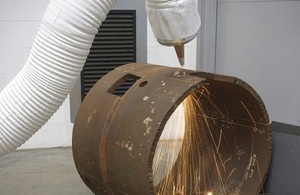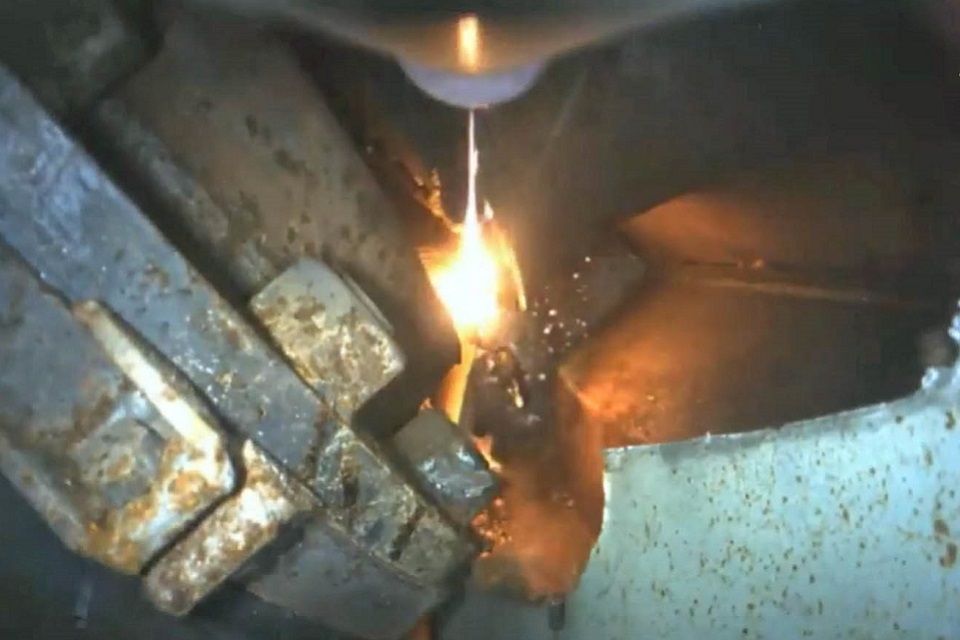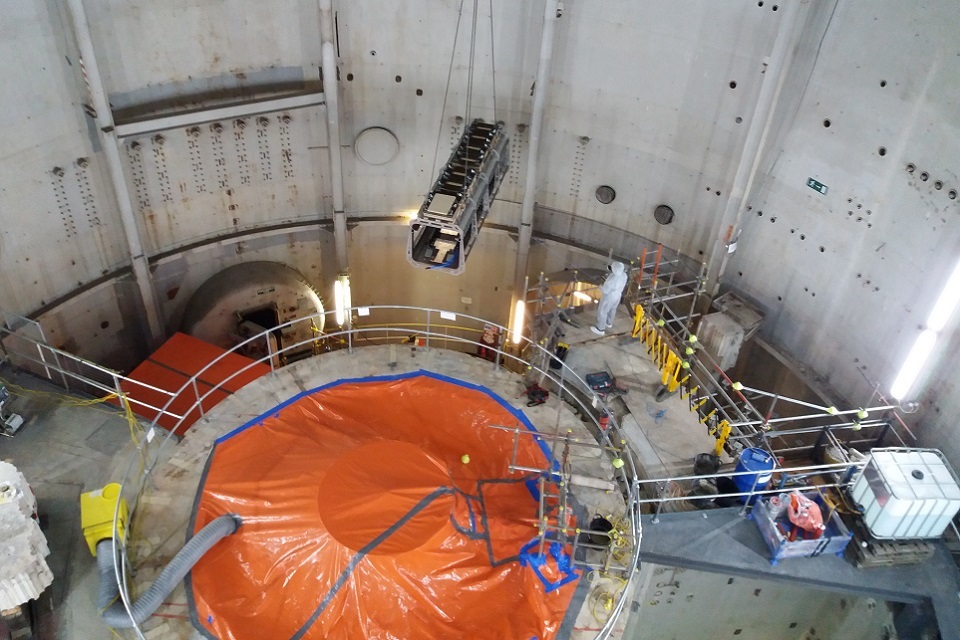Snake slithers through to tackle Dragon
A laser-cutting robotic snake has been put to work on the highly radioactive core of Winfrith's redundant Dragon reactor in Dorset.

LaserSnake has already demonstrated its capability at Sellafield
The long, flexible – a type of robotic - arm was passed through a narrow hole in the 3-metre thick concrete around the core, then sliced through a 400mm diameter vessel attached to the Dragon reactor core.
Contractors OC Robotics were called in by the Magnox team decommissioning Dragon when it became clear that removing the vessel, known as the Purge Gas Pre-Cooler (PGPC), would be a challenging task: one end was joined to the core in the high-radiation area behind the concrete shielding and several steel plates, while the other end extended outside the shielding.
The LaserSnake technology, developed by OC Robotics and TWI with R&D funding from the NDA, seemed perfect. Controlled from a distance by specialist operators, LaserSnake can squeeze through a small access hole, manoeuvre easily inside a very confined space and cut multiple layers with its high-powered laser. This allowed the work to be carried out inside the existing radiation shielding of the reactor.

In action at the Dragon reactor
Although LaserSnake had previously been deployed at Sellafield, the thick pipework, complex PGPC layout and limited access meant it was necessary to prepare 2 mock-ups which allowed comprehensive testing and rehearsals to take place before making the cuts for real.
In the end, less than 3 hours of actual cutting time were needed to free the PGPC from the reactor core.
NDA Head of Technology Melanie Brownridge said:
This is an excellent example of how early NDA R&D funding support enabled the technology to grow from an exploration of whether laser-cutting could actually be adapted for nuclear into a system that, with further funding and collaborative working, is now mature and being successfully deployed on a number of our sites.
Magnox Senior Project Manager Andy Philps added:
We believe this is the first time that laser-cutting technology has been deployed directly on the core of a nuclear reactor. The ability of the LaserSnake to carry out ‘keyhole surgery’ on the reactor core meant that the work could be carried out using existing protective shielding.
This has saved at least £200,000 and the radiation dose that would have accompanied building additional infrastructure, and saved four weeks on the programme’s critical path. It has also enabled us to remove this component earlier than originally planned.
Adam Mallion, from OC Robotics, said:
The difficult environment of the external core of the Dragon reactor was an ideal challenge to show the full capabilities of laser-cutting technology and snake-arm robots. Cutting something as thick as the 400mm PGPC with its complex internal geometry had never been attempted before.
The deployment showed once again that the OCR LaserSnake system could be set up and deployed quickly and efficiently to contribute towards safer, cheaper and faster decommissioning of the plant.

LaserSnake and its housing are lifted into place at the Dragon reactor
Dragon, a prototype high-temperature reactor cooled by helium, was developed in the 1960s as a joint European project involving 13 countries. After opening in 1964, it operated until 1975 when it was closed and defueled before being put into a passive ‘care and maintenance’ regime.
In 2011, decommissioning began in earnest. All that now remains is the reactor core contained in a pressure vessel surrounded by the concrete biological shield, 7 steel containment plates and an outer containment building.
Under the current programme, it is expected that the reactor core will be removed by 2021 and the facility demolished to ground level by 2022.